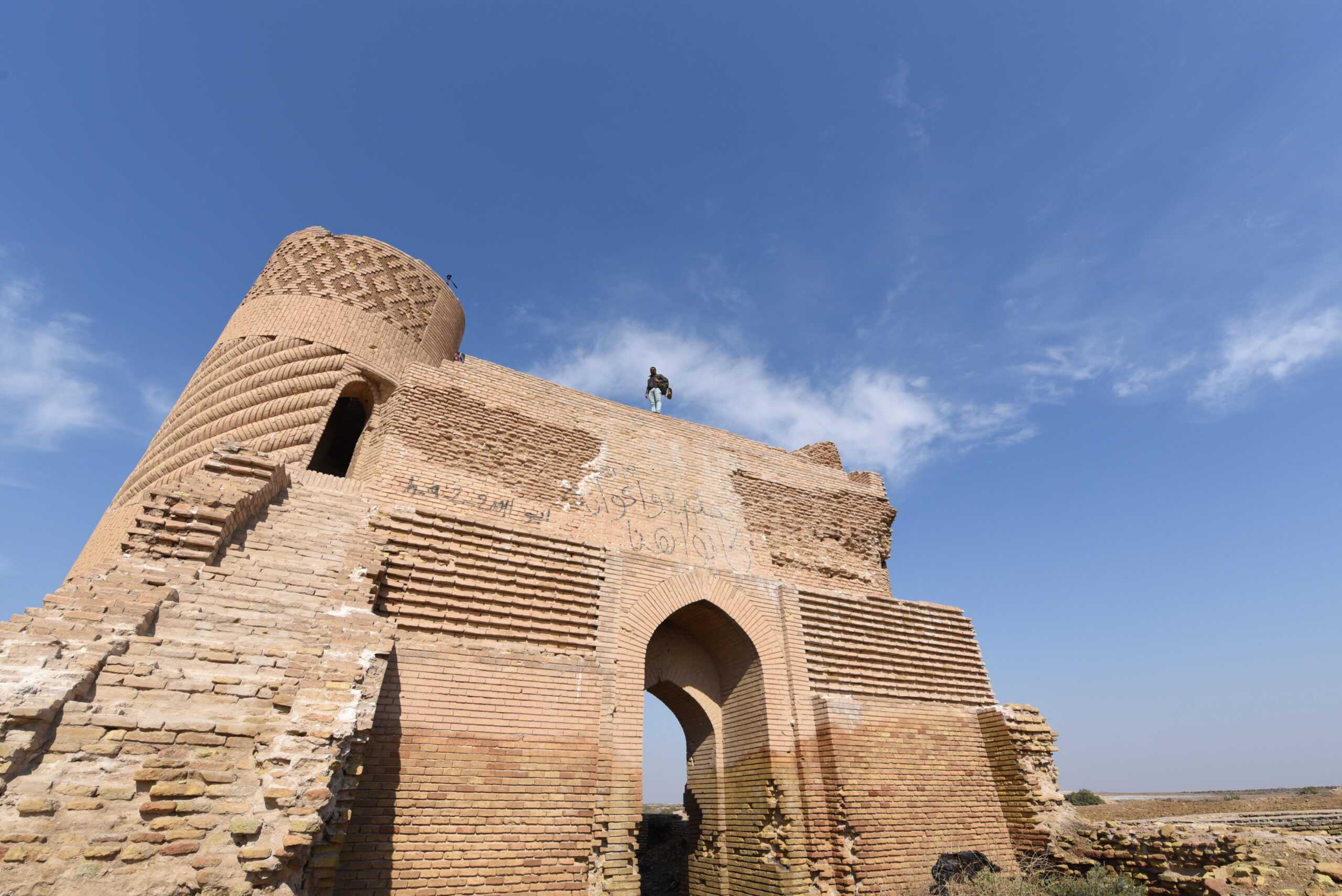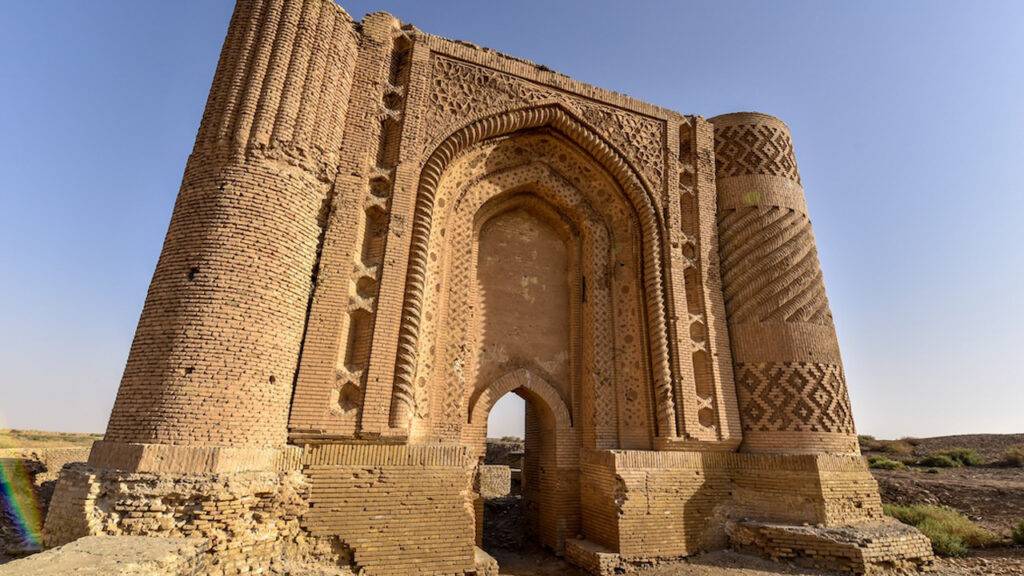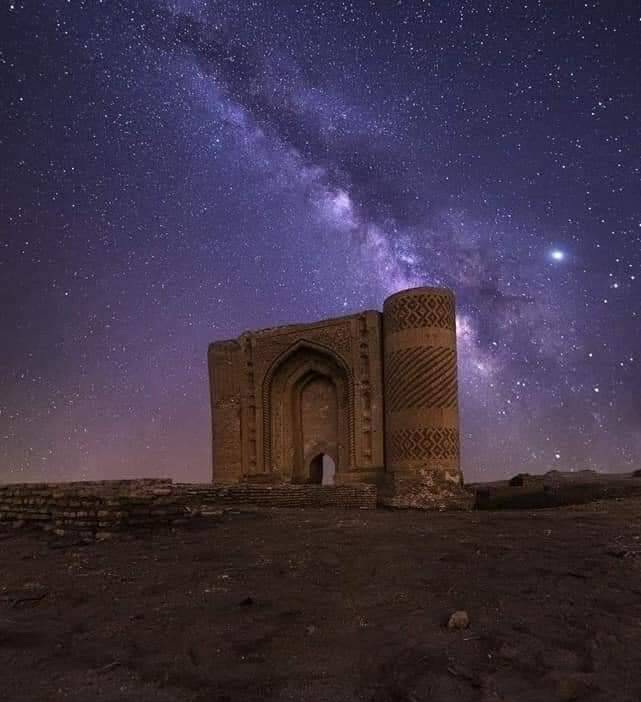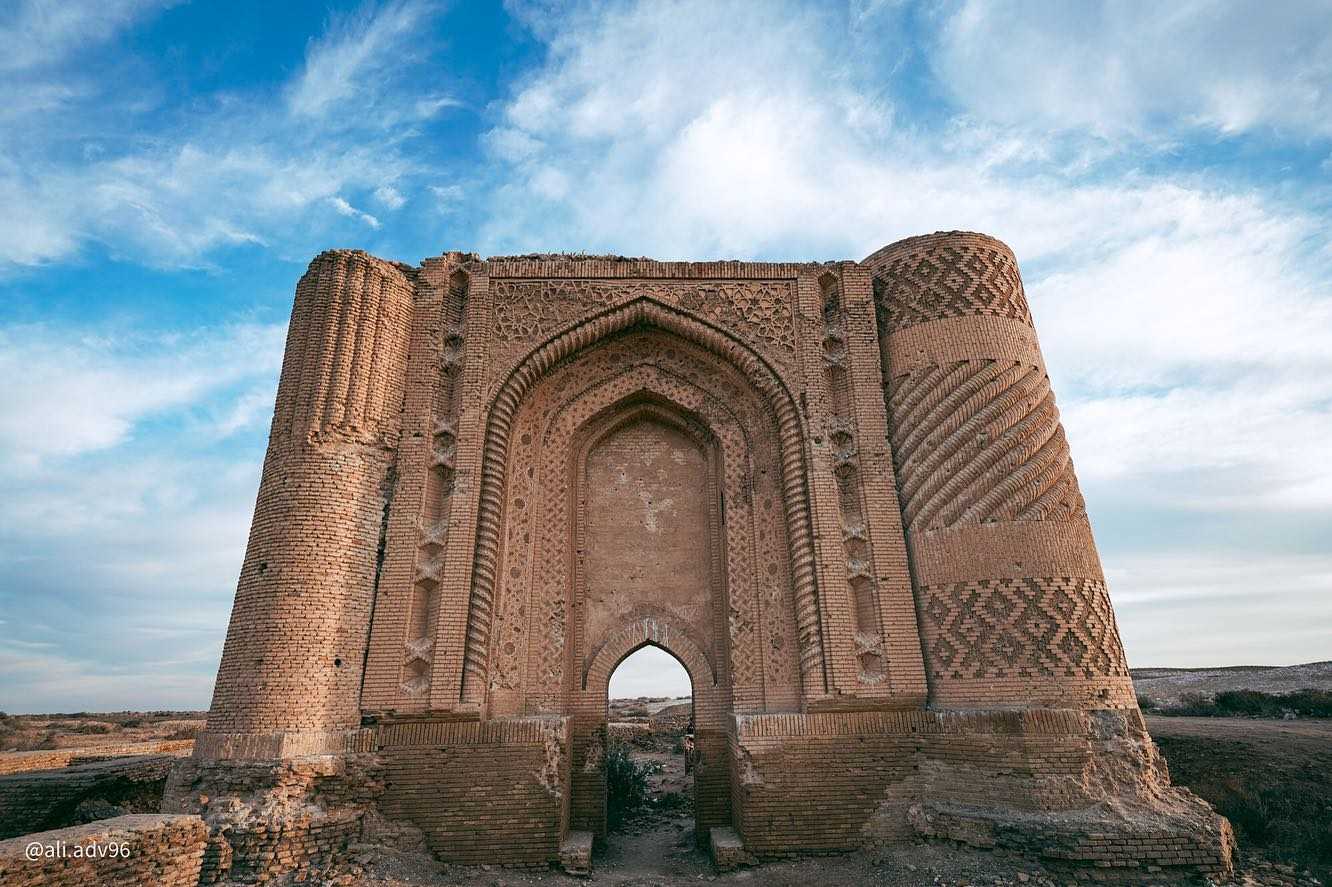Located in the Wasit province of Iraq, the Gate of Sharabai School is a historical marvel that has stood the test of time. This architectural gem, with its intricate designs and imposing structure, is a testament to the rich history and culture of the region. It is a must-visit for any history enthusiast.
Get your dose of History via Email

Historical Background
The Gate of Sharabai School, also known as the Gate of the Sharabai Madrasa, dates back to the 12th century during the Islamic Golden Age. It was built during the reign of the Seljuk Empire, a medieval Turko-Persian Sunni Muslim empire. The Seljuks were known for their patronage of art and architecture, and the Gate of Sharabai School is a prime example of their architectural prowess.

Architectural Highlights
The Gate of Sharabai School is a stunning example of Islamic architecture, featuring intricate geometric and floral patterns that are characteristic of the Seljuk style. The gate is made primarily of baked bricks, a common building material in the region at the time. The bricks were likely sourced locally, given the abundance of clay in the region. The gate stands at an impressive height of approximately 15 meters, with a width of about 10 meters. The construction method involved the use of arches and domes, a common feature in Islamic architecture. The gate’s design is symmetrical, with two towers flanking the central archway. The towers are adorned with decorative bands of Kufic inscriptions, a style of Arabic calligraphy.

Theories and Interpretations
As the entrance to a madrasa, or Islamic school, the Gate of Sharabai School was likely designed to inspire awe and reverence. The intricate designs and inscriptions may have served both a decorative and educational purpose, as students could learn from the inscriptions. The gate’s imposing size and grandeur could also have been intended to reflect the importance of education in Islamic culture. The exact dating of the gate is not known, but it is generally agreed upon that it was built in the 12th century, based on stylistic comparisons with other Seljuk structures. The gate’s alignment does not appear to have any astronomical significance, but this is a topic of ongoing research.

Good to know/Additional Information
The Gate of Sharabai School is one of the few remaining structures from the Seljuk period in Iraq. Despite the ravages of time and conflict, it has managed to retain much of its original beauty and grandeur. It is a testament to the skill and craftsmanship of the Seljuk builders and a symbol of Iraq’s rich cultural heritage. The gate is currently under the protection of the Iraqi State Board of Antiquities and Heritage, and efforts are being made to preserve and restore it for future generations to appreciate.

